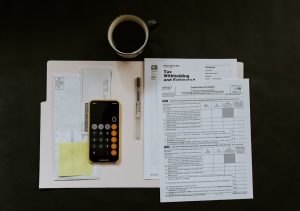The Pros and Cons of Using an Automatic Forex Trader
Forex trading has gained immense popularity in recent years, attracting millions of individuals looking to make profits from currency fluctuations. With technological advancements, the forex market has seen the emergence of automatic forex traders, also known as forex robots or expert advisors (EAs). These software programs are designed to analyze the market, identify trading opportunities, and execute trades automatically on behalf of the trader. While automatic forex traders offer various benefits, they also come with their fair share of drawbacks. In this article, we will explore the pros and cons of using an automatic forex trader.
Pros:
1. Emotionless Trading: One of the biggest advantages of using an automatic forex trader is that it eliminates human emotions from the trading process. Emotions such as fear, greed, and overconfidence often lead traders to make irrational decisions, resulting in losses. Automatic forex traders strictly follow predefined trading strategies without being influenced by emotions, leading to more disciplined and consistent trading.
2. 24/7 Trading: The forex market operates 24 hours a day, five days a week. This can be challenging for manual traders who have limited time or cannot monitor the market round the clock. Automatic forex traders, on the other hand, can execute trades continuously, even when the trader is asleep or occupied with other commitments. This ensures that no trading opportunities are missed, and trades are executed at the most opportune moments.
3. Enhanced Speed and Accuracy: Automatic forex traders are equipped with sophisticated algorithms that can analyze vast amounts of market data within seconds. This enables them to identify potential trading signals and execute trades with lightning speed. Additionally, these robots can execute trades with high accuracy, minimizing the chances of human error. This can be particularly beneficial during periods of high market volatility when manual traders may struggle to keep up with fast-moving markets.
4. Backtesting and Optimization: Most automatic forex trading platforms come with built-in backtesting and optimization features. Traders can use historical market data to test their trading strategies and fine-tune them for optimal performance. This allows traders to assess the viability of their strategies before risking real capital in live trading.
Cons:
1. Lack of Adaptability: While automatic forex traders excel at executing predefined trading strategies, they often struggle to adapt to changing market conditions. Markets are dynamic and can experience sudden shifts in trends or volatility. Automatic traders may fail to adjust their strategies accordingly, leading to losses. Traders must regularly monitor and update their strategies to ensure they remain effective in different market conditions.
2. Dependence on Technical Analysis: Automatic forex traders rely heavily on technical analysis indicators to generate trading signals. These indicators use past price data to predict future market movements. However, technical analysis has its limitations, as it does not consider fundamental factors that can significantly impact currency prices. Traders using automatic forex traders should supplement their strategies with fundamental analysis to gain a comprehensive understanding of the market.
3. Potential System Failures: Like any software, automatic forex traders are prone to technical glitches, system errors, or internet connectivity issues. A sudden software malfunction or internet outage could result in missed trading opportunities or even erroneous trades. Traders must have contingency plans and backup systems in place to mitigate the risks associated with technical failures.
4. Over-Optimization and Curve Fitting: While backtesting and optimization can be advantageous, they can also lead to over-optimization and curve fitting. Traders may be tempted to tweak their strategies excessively to fit historical data perfectly. However, this can result in strategies that are not robust and fail to perform well in live trading. Traders should exercise caution and strike a balance between optimization and generalization to ensure their strategies are adaptable and effective.
In conclusion, automatic forex traders offer several benefits such as emotionless trading, 24/7 trading, enhanced speed and accuracy, and backtesting capabilities. However, they also come with drawbacks including a lack of adaptability, reliance on technical analysis, potential system failures, and the risk of over-optimization. Traders must carefully weigh these pros and cons and choose a trading approach that aligns with their risk appetite, trading style, and level of involvement in the trading process. Ultimately, the successful application of automatic forex traders relies on the trader’s ability to monitor, adapt, and optimize their strategies to maximize profitability.





